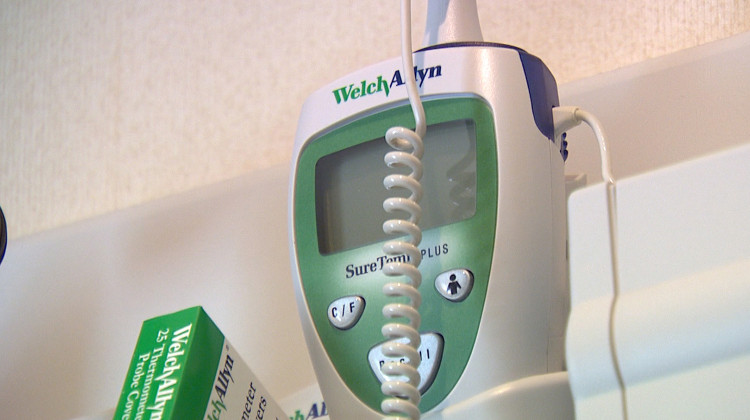
The Upper Midwest Telehealth Resource Center's Amnah Anwar said remote patient monitoring – such as controlling blood sugar or keeping an eye on high-risk pregnant people – can be used at existing rural health care facilities and aided by telehealth.
FILE PHOTO: WFIU/WTIUHow does telehealth affect health care in rural areas? One audience member inspired this question.
Amnah Anwar is with the Upper Midwest Telehealth Resource Center. She said telehealth is a good resource in rural areas, but is most effective in conjunction with in-person care.
“I would like to remove the misconception or the misunderstanding that telehealth is a replacement for any type of health care, in-person,” she said. “So, whenever we're talking about telehealth, telehealth is an additional tool through which the health care can be provided to the patients.”
Anwar said access to physical hospitals in these areas not only help provide extra care, but also for jobs.
“The presence of rural hospitals in a rural community is of utmost importance, not only for the care to health care, but also for the benefit of the community,” she said. “As usual, the hospitals are the biggest employers in those communities.”
Anwar said telehealth is still a helpful resource in these areas. However, she said telehealth is only effective in areas that have reliable broadband connections.
READ MORE: How can Hoosiers ensure their telehealth providers are legitimate?
Join the conversation and sign up for the Indiana Two-Way. Text "Indiana" to 73224. Your comments and questions in response to our weekly text help us find the answers you need on statewide issues.
Additionally, she said telehealth has its limitations in care.
“It is not fit for our patients, it is not fit for all types of health care,” Anwar said. “Hospitals, they have an emergency department and they usually have some sort of treatment for labor and delivery, and they have other types of resources that provide patient care, but obviously is not provided through telehealth.”
Despite this, Anwar said telehealth greatly expands access to care that may be far away or unavailable in these areas. She said this can expand beyond the traditional patient and provider scope – allowing available services in rural communities to serve as an intermediary. with specialists and services available in other areas.
“So even if you have a provider in your community, they might consult with a specialist outside of your community by shooting images, by sharing your X-rays, by sharing your ultrasound and getting their second opinion or however you want to do that regarding the care to your health,” she said.
Anwar said remote patient monitoring – such as controlling blood sugar or keeping an eye on high-risk pregnant people – can also be used at existing rural health care facilities and aided by telehealth.
“These capabilities can be utilized and have been utilized in remote areas where you cannot make those appointments like two-hour appointments to your provider,” she said.
Anwar said rural or distant health care systems that solely use telehealth are not ideal, but better than having no health care.
“I think some health care access is better than no health care access,” she said.
She emphasized the importance of having telehealth and in-person care as part of an effective system.
Violet is our daily news reporter. Contact her at vcomberwilen@wfyi.org or follow her on Twitter at @ComberWilen.
9(MDAyMzk1MzA4MDE2MjY3OTY1MjM5ZDJjYQ000))
 DONATE
DONATE






 Support WFYI. We can't do it without you.
Support WFYI. We can't do it without you.